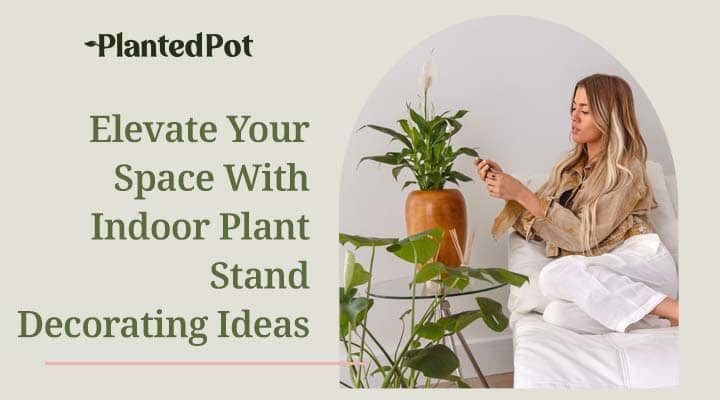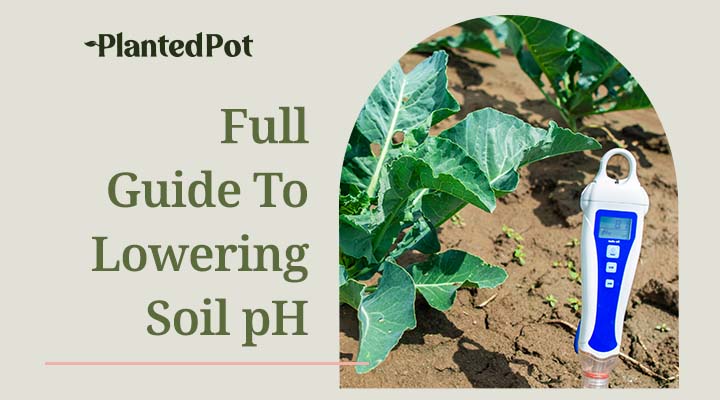
- Tropical House Plants: A Simple Way to Make Your Place Exotic
- Kyle Chin
- May 6, 2021
- 11:35 pm
- No Comments
Tropical House Plants: A Simple Way to Make Your Place Exotic
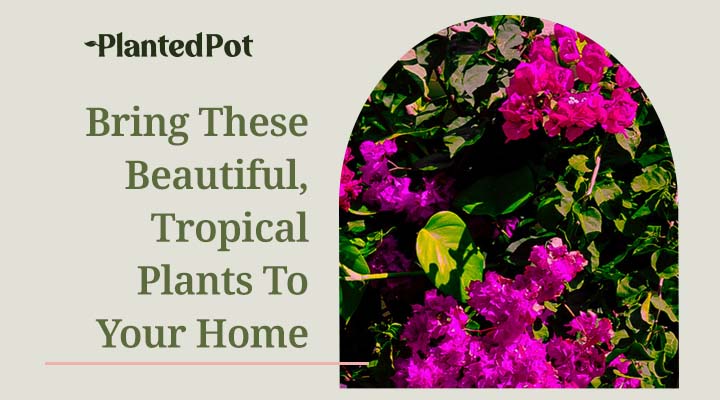
Tropical House Plants: A Simple Way to Make Your Place Exotic
Tropical house plants are a great way to bring all the beautiful colors and exotic plant life into your home! The countless varieties and species of house plants you can choose from can give you the freedom to customize different looks and color schemes for your house. More and more people have been jumping on this new house plant movement, and many of you might already own a tropical plant or two!
Most of the common house plants that people buy are tropical because they adapt quickly to most indoor environments. Whether you are looking for a classy, exotic, or flashy vibe, there is a tropical plant out there for you!
What Is a Tropical House Plant?
Tropical house plants are plants that originate from tropical regions all over the world. Most of the plants you see in home improvement stores, plant nurseries, or flower shops are tropical house plants. They’re among the most popular varieties because they can come in a wide selection of colors, shapes, and sizes.
Additionally, the climate-controlled indoor environments that we live in are the most similar to the warm, humid conditions that these tropical plants grow in. Many of these plants are also very low-maintenance, making them ideal for new plant owners or those with busy schedules!
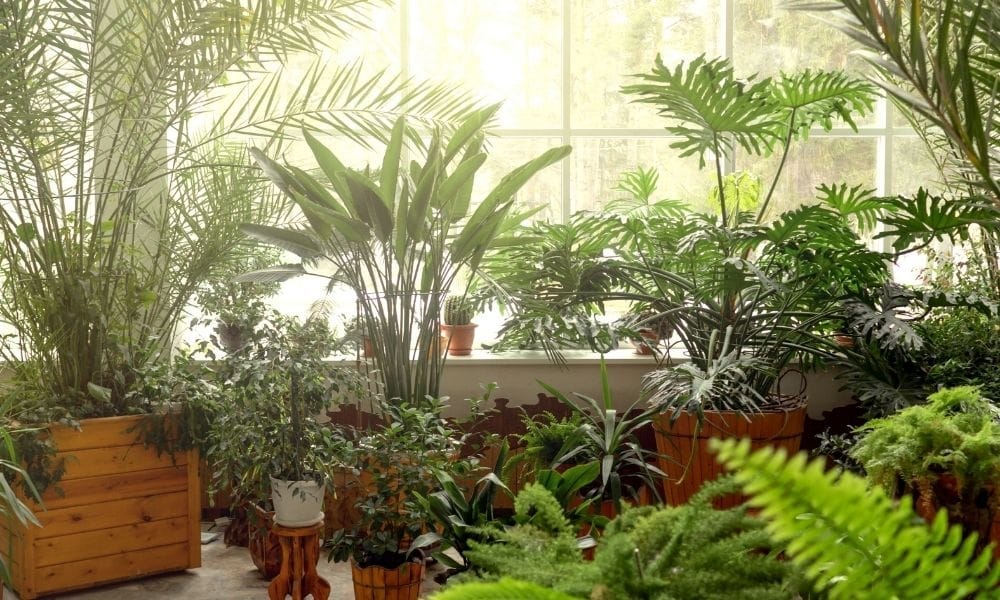
Do Tropical House Plants Have Benefits?
Although not unique to tropical house plants, pretty much all house plants have significant benefits for the health of your body and mind. Indoor plants are exceptional at lowering stress, improving focus, and can even improve your mental health by clearing the air of harmful toxins. Some of the main benefits of owning a tropical indoor plant are the following.
Improves Air Quality
Plants have the natural ability to clear out harmful gasses and toxins in the air like formaldehyde, benzene, and carbon monoxide. Breathing in too many toxins can potentially lead to headaches, fatigue, and loss of focus. The NASA Clean Air Study showed that plants were very effective at removing VOCs (volatile organic chemicals) and filtering the air.
Indoor house plants also grow by absorbing carbon dioxide in the air and expelling fresh oxygen. In essence, plants act as a natural air purifier by recycling the CO2 to exhale and create clean air for us to breathe. Sometimes the air quality indoors can be just as bad as the outdoors, so having a few plants around can help clean the air.
Lowers Stress and Anxiety
Studies have shown that plants can play a significant role in lowering stress and anxiety levels. In one study by researchers from Washington State University, they found that people worked far more efficiently in the office when they strategically placed various plants around them. The researchers also found that test subjects had lower blood pressures and heart rates than the control group.
Interacting with your plants, like watering or pruning them, can also have surprising therapeutic benefits that help keep your head clear and more focused on the task at hand. Even passive interaction like staring or admiring the plant in front of you can help keep stress levels down. Sometimes all we just need to give our minds a break from the grind of everyday life.
Decorate Your House!
The beautiful colors and patterns of tropical plants are perfect for decorating any house. Indoor plants can add a splash of color to any home.
Different types of plants, from succulents to hanging plants to a tropical tree, can all make fantastic complements to any household. Allow yourself to get creative and mix different plants to create a warm, exotic atmosphere for your home!
Are Tropical House Plants Easy to Care For?
Most tropical house plants are extremely easy to care for and grow!
Many popular tropical plants like orchids and palm plants don’t require special care and can thrive in almost any environment. Some plants like the Anthurium may require slightly more work, but they are very rewarding to grow when you see the final product. For more information on each specific plant, check out the rest of our site for detailed plant care guides!
Can Tropical Plants Survive Without Sunlight?
Most tropical plants thrive under bright, indirect light that mimics their environment in the wild. Many of these plants grow under extensive, sprawling tropical forests that filter the sunlight, allowing indirect sunlight to hit the plants below. Staying away from direct sunlight allows the plants to grow safely without the risk of leaf burn.
Some unique tropical plants, like bromeliads, can survive in low-light conditions, sometimes with almost no sunlight. These unique and durable plants can easily thrive in almost any environment, making them some of the most popular varieties to own.
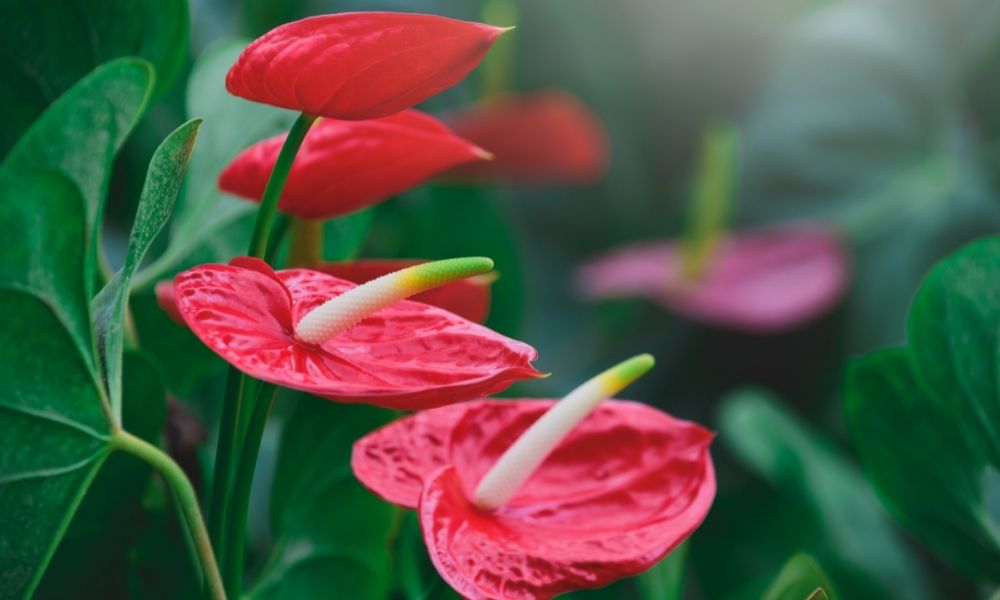
Which Climates Are Best for Tropical House Plants?
Ideally, the best climate for tropical plants is a warm and slightly humid habitat. You want to keep the temperature around 65-75°F which is similar to their tropical origins. Tropical humidity typically hovers around 80%, but they can still thrive in the average indoor humidity of around 50%.
If you live in a dryer region, consider using a humidifier in the same room as your tropical house plant can help increase moisture content in the air. You can also place a bed of wet rocks underneath the plant to allow the water to evaporate slowly and create a more humid atmosphere.
Should Tropical Plants Be Kept Indoors or Outdoors?
Most tropical plants should be kept and grown indoors to avoid direct sun during the day. Tropical plants are also sensitive to freezing temperatures, so growing them indoors can protect them from cold.
However, you can still choose to grow your tropical plants outdoors if you want them to gain maximum benefit from the humidity and temperature. Just remember to provide plenty of partial shade and bring the plants back inside when the temperature starts to get cold!
The Most Popular Tropical House Plants
To help you get started with your next purchase or budding collection, here are some of our favorite and most popular tropical house plants you can buy!
Anthuriums
There are over 1,000 species of Anthuriums, one of the largest plant families in the world. Most are native to the warm, tropical regions of Central America, South America, and the Caribbean. Anthuriums are prized for their bright, colorful flowers or their beautiful, striking foliage.
Anthuriums require slightly more attention and care than other tropical plants, but they are still generally straightforward to grow. They should be kept in warm, humid conditions, and the soil should be kept slightly moist. Under proper care, some species of Anthuriums can bloom year-round, making them one of the best-selling house plants.
Some of the most popular Anthurium varieties on the market are:
- Flamingo Flower/Painter’s Pallete (Anthurium andreanum) – This variety features beautiful, heart-shaped leaves. The plant also blooms colorful flowers that can come in white, pink, red, or variations of the three.
- Pigtail Plant (Anthurium scherzerianum) – The Pigtail Plant has a unique curling flower spike on top of the beautiful colored flowers. The arrow-shaped leaves are also splashed with reds and pinks for a perfectly balanced Anthurium.
- Black Anthurium (Anthurium watermaliense) – Black Anthuriums have large, thick leaves that are dark purple, almost black colored leaves. Other names include “Black Beauty” or “Black Queen” for this unique tropical houseplant.
Related: Anthurium Plant Care: 7 Simple Steps for Optimum Growth
Orchids
Orchids are one of the most popular indoor plants to own. There are over 30,000 species of orchids, but the most common ones you might see are Moth Orchids and Cane Orchids. This exotic plant is sought after for the beautiful shades of purple, pink, and white flowers.
Orchids may have a reputation for being difficult to keep alive, but they are actually very adaptable to their surroundings. While they thrive in bright, indirect light, and humid conditions, they can also tolerate low light and a bit of dryness. Give it a little bit of love and attention, and you’ll have a beautiful plant in your house!
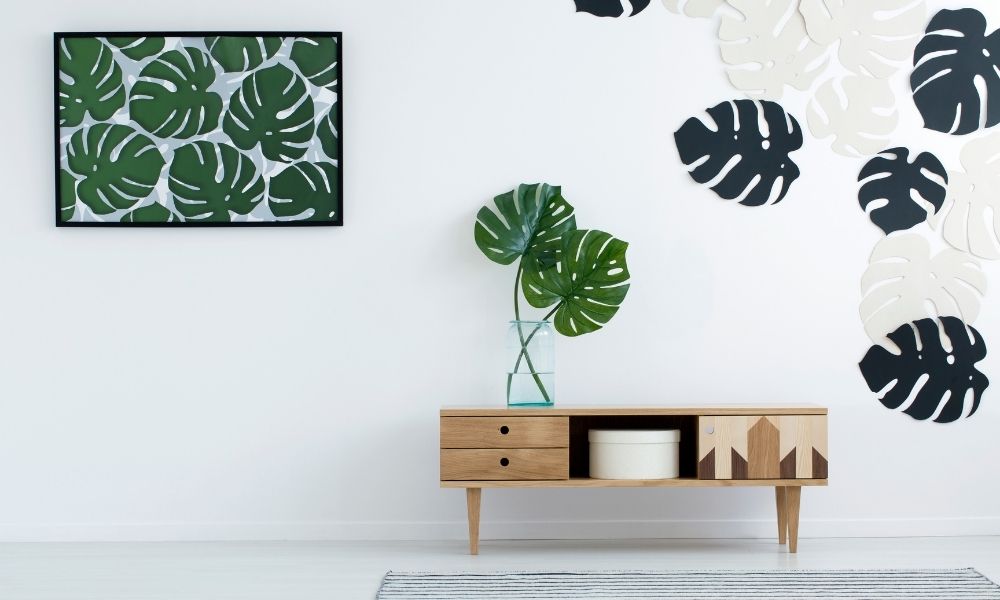
Monstera Deliciosa
The Monstera Deliciosa, also known as the Swiss Cheese Plant or Split Leaf Philodendron, is known for the natural holes in the leaves of the plant. The large, glossy, green leaves are instantly recognizable and can grow up to 3 feet long! This tropical house plant is easy to grow and thrives in high humidity.
Monstera Deliciosas are climbing plants and are often used by interior designers to decorate both residential and office spaces. The large leaves and long stems also make Monsteras great as a hanging plant. Although the plant can bear fruit in the wild, it is not typical for houseplants.
Dumb Cane
You can find Dumb Canes (Dieffenbachia seguine) almost everywhere as one of the most commonly purchased tropical plants. Dumb Canes can be poisonous, and chewing on themexceptionally can cause swelling in the mouth, leading to difficulty talking. Although you wouldn’t normally eat your houseplants, keep it away from curious small children and pets just to be safe!
Dumb Cane plants feature large oval leaves that come to a point at the end. The leaves are a beautiful mix of green, cream, and white colors. This tropical plant is very fast-growing and can reach a height of about 2-3 feet within just a year of planting.
Bromeliads
Bromeliads are intensely bright and can add a fantastic pop of color to any garden or household. They are also one of the easiest tropical plants to grow indoors, despite the large blooming and majestic appearances.
Bromeliads are extremely flashy, coming in a wide range of colors, including red, orange, yellow, green, and purple. The leaves can also come with different patterns of stripes, spots, and bands that add to the allure of this unique tropical plant.
It may take a couple of years before your Bromeliad blooms, but the stunning colors are well worth the wait. Luckily, you don’t need to do extra work for the plant to thrive because they are generally very resistant to drought, temperature fluctuations, and lack of feeding.
Philodendron
Philodendrons are a type of vining, tropical plant. They typically grow on a support structure such as a fence or trellis. Philodendron plants are known for being incredibly easy to grow!
Philodendrons are easy to care for and super versatile, and you can grow them in a hanging basket or a pot. They love natural bright light but can tolerate low-light conditions extremely well. With hundreds of species of philodendrons, you can bring the tropics back to your home.
Common Issues Found with Tropical House Plants
The most common issues with raising tropical house plants are typically overwatering pests or lack of sunlight. Here’s how to recognize these issues and how to deal with them.
- Overwatering – It may seem like providing extra water will help the plant grow better, but the truth is exactly the opposite. Plants sitting in excess water or moisture in the soil can suffer from root rot. Root rot kills the plant and often shows up as black or brown spotting in the plant.
- Lack of sunlight – If your plant is not getting enough sun, it may start to have a “leggy” or stretched-out appearance. The plant is naturally growing towards the sun and may look droopy or wilted. Move the plant to a window that receives more natural, indirect sunlight to help it grow better.
- Pests or insects – Plants with large leaves are most susceptible to pests like spider mites or mealybugs. Remember to check through your plant every once in a while for bugs. If you notice pests living on the underside of the leaves, use a plant-safe insecticide to remove them safely without damaging the plant.
Final Thoughts – Tropical House Plants
Tropical house plants should be part of every plant owner’s collection! The beauty and appeal of these plants are unparalleled and bring a little flavor of the jungle back home. Consider getting a tropical plant if you’re looking to spice up the decor of your home!
Subscribe To Our Newsletter!
Get Exclusive Discounts & the Latest News Sent to your inbox!


